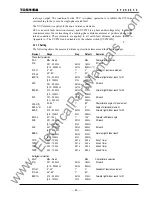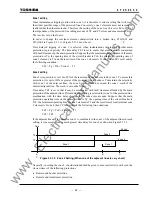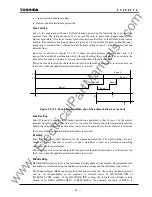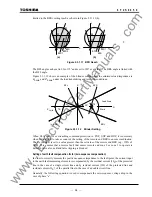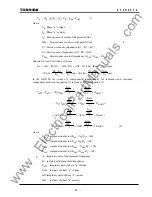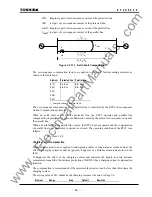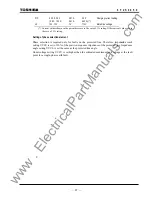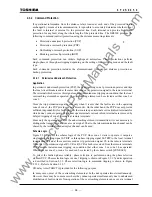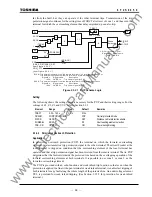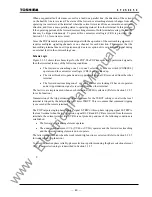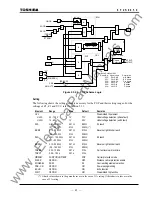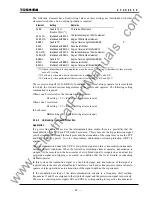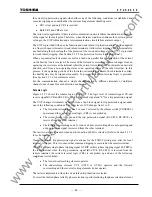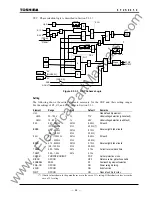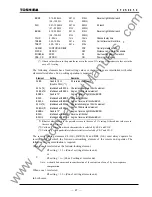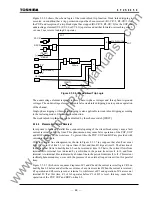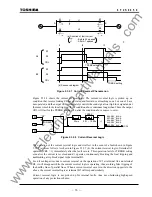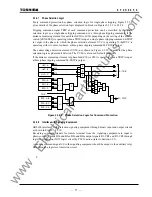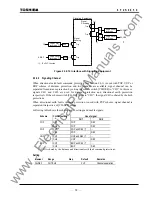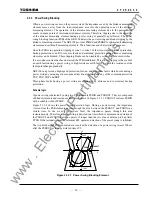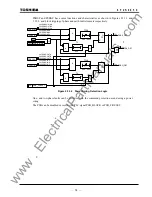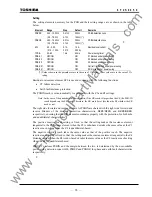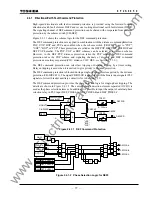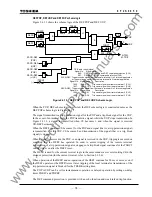
63
6
F
2
S
0
8
5
0
the actual trip permission signals when either one of the following conditions is established and
executes tripping on condition that the overreaching element should operate.
•
CR1 is lost and only CR2 is received.
•
Both CR1 and CR2 are lost.
The latter is also applicable if there is a telecommunication circuit failure in addition to attenuation
of the signal at the fault point. Therefore, when the latter condition continues for a certain period
or longer, the UOP is blocked and a telecommunication circuit failure alarm is output.
The UOP is provided with an echo function and weak infeed trip function and even when applied
to a line with open terminals or weak infeed terminals, it allows fast tripping of both terminals for
any fault along the whole length of the protected line. An undervoltage element UVL is provided
for weak infeed tripping. (See Section 2.3.2.5 for protection for weak infeed terminal.)
When a sequential fault clearance occurs for a fault on a parallel line, the direction of the current
on the healthy line is reversed. The status of the forward overreaching element changes from an
operating to a reset state at the terminal where the current is reversed from an inward to an outward
direction, and from a non-operating status to an operating status at the other terminal. In this
process, if the operating periods of the forward overreaching element of both terminals overlap,
the healthy line may be tripped erroneously. To prevent this, current reversal logic is provided.
(See Section 2.3.2.6 for current reversal.)
For the communication channel, a single channel shared by different terminals or multiplex
channels, one channel for each direction can be used.
Scheme Logic
Figure 2.3.2.3 shows the scheme logic of the UOP. The logic level of transmit signal CS and
receive signal R1-CR and R2-CR is "1" for a trip block signal and "0" for a trip permission signal.
The UOP changes its transmit signal CS from a trip block signal to trip permission signal under
one of the following conditions. The logic level of CS changes from 1 to 0.
•
The forward overreaching zone 2 or zone 3 selected by the scheme switch [ZONESEL]
operates and the current reversal logic (CRL) is not picked up.
•
The circuit breaker is open and the trip permission signal (R1-CR=0, R2-CR=0) is
received from the other terminal.
•
The forward overreaching zone 2 or zone 3 and reverse looking Z4 are not operating and
a trip permission signal is received from the other terminal.
The last two are implemented when an echo function (ECH) is selected. (Refer to Section 2.3 2.5
for echo function.)
Transmission of a trip permission signal continues for the TSBCT setting even after the local
terminal is tripped. This is to ensure that command tripping is executed at the remote terminal.
The UOP outputs single-phase tripping signal S-TRIP or three-phase tripping signal M-TRIP to
the local terminal when the trip permission signal (R1-CR=0, R2-CR=0) is received from the
remote terminal, the current reversal logic (CRL) is not picked up and one of the following
conditions is established.
•
The forward overreaching element operates.
•
The undervoltage element UVL (UVLS or UVLG) operates and the forward
overreaching and the reverse looking elements do not operate.
The latter is implemented when the weak infeed trip function is selected.
To select the faulted phase reliably, phase selection is performed using the phase selection element
www
. ElectricalPartManuals
. com
Summary of Contents for GRL100-701B
Page 329: ... 328 6 F 2 S 0 8 5 0 w w w E l e c t r i c a l P a r t M a n u a l s c o m ...
Page 339: ... 338 6 F 2 S 0 8 5 0 w w w E l e c t r i c a l P a r t M a n u a l s c o m ...
Page 351: ... 350 6 F 2 S 0 8 5 0 w w w E l e c t r i c a l P a r t M a n u a l s c o m ...
Page 381: ... 380 6 F 2 S 0 8 5 0 w w w E l e c t r i c a l P a r t M a n u a l s c o m ...
Page 413: ... 412 6 F 2 S 0 8 5 0 w w w E l e c t r i c a l P a r t M a n u a l s c o m ...
Page 417: ... 416 6 F 2 S 0 8 5 0 w w w E l e c t r i c a l P a r t M a n u a l s c o m ...
Page 453: ... 452 6 F 2 S 0 8 5 0 w w w E l e c t r i c a l P a r t M a n u a l s c o m ...
Page 457: ... 456 6 F 2 S 0 8 5 0 w w w E l e c t r i c a l P a r t M a n u a l s c o m ...
Page 473: ...w w w E l e c t r i c a l P a r t M a n u a l s c o m ...

